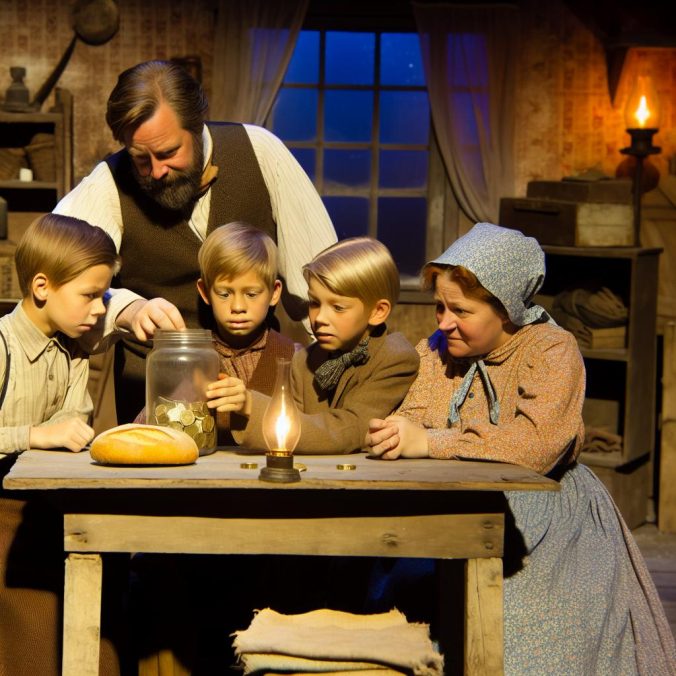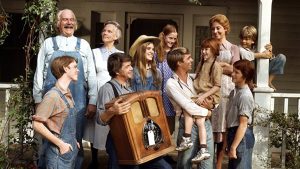The Setting of Economic Hardship in “The Waltons”
“The Waltons,” a television series that aired from 1972 until 1981, remains a benchmark for storytelling that captures the authentic challenges faced by families during the Great Depression and World War II. Set on the fictional Walton’s Mountain in rural Virginia, the show is inspired by the novel “Spencer’s Mountain” by Earl Hamner Jr., who not only penned the original story but was also the creative force behind the television adaptation. Through the eyes of the Walton family, viewers gain insight into the economic struggles and resilient spirit typical of that era.
Reflecting the Great Depression
The portrayal of the Great Depression in “The Waltons” is both vivid and accurate, providing a lens through which we can understand the 1930s. At the heart of the show are John and Olivia Walton, the parental figures who guide their family through these trying times. Their experiences mirror those of countless American families who found themselves grappling with financial uncertainty and harsh realities. Living on a farm, the Waltons had to rely heavily on their resources and ingenuity, serving as an emblem of persistence and adaptation in a world turned unstable.
Income and Employment Challenges
Central to the family’s economic dilemma is John Walton’s job at the local sawmill, which stands as the family’s mainstay in a time marked by economic fluctuation. His role as a sawmill worker underlines the precarious job market of the era, with employment often being uncertain. John’s attempts to supplement their income through occasional carpentry jobs underline a common experience of the Great Depression—underemployment. This periodic work, often inconsistent, functioned as a narrative tool to highlight the volatile economic environment and the necessity of seizing opportunities, however fleeting they might be.
Frugality and Self-Sufficiency
Within the household of the Waltons, the principles of frugality and self-reliance were not just words; they were a way of life. Their existence was interwoven with the management of a vegetable garden, the rearing of livestock, and the preservation of food. These practices were crucial to their survival, especially when every resource counted. The series frequently depicted the family’s ongoing battle to stretch their limited means, showcasing ingenuity in the kitchen and the barter system prevalent in their community. This angle served as a reminder of the lengths to which many went to endure economic adversity.
Community Support and Solidarity
A powerful theme in “The Waltons” is the depiction of community as a bastion against adversity. The townsfolk frequently united in support of one another, building a network of care and mutual help that was essential in weathering economic storms. This reflection of community relationships underlined the importance of solidarity and the role it played in individual and collective endurance through difficult times.
Resource Sharing
Episodes of “The Waltons” often showed characters engaging in resource sharing, an embodiment of a cooperative safety net. This sharing included essentials such as food and clothing, as well as services, creating an informal but vital system of welfare. Such instances were not merely acts of generosity but were acts of necessity, ensuring mutual survival in times characterized by scarcity and need.
Educational and Moral Lessons
“The Waltons” served not only as entertainment but also as a medium for education and impartation of moral values. Through the storylines, viewers learned about past economic difficulties, gaining insights into the resilience required to navigate such situations. The family upheld values like honesty and hard work, with the importance of family unity frequently highlighted. These narratives offered audiences a chance to learn about historical socioeconomic conditions, enhancing their appreciation and understanding of differing economic challenges.
Concluding Thoughts
The representation of economic hardship in “The Waltons” stands out for its sincerity and depth. By focusing on the strength found in the family unit and the larger community, the series offered its audience a meaningful glimpse into the past. It showcased how determination, love, and cooperation helped families like the Waltons navigate complex economic landscapes. Such portrayals brought a human touch to historical realities, allowing viewers to grasp the intricacies of life during the Great Depression and World War II. This understanding promoted a connection with those who lived through such difficult times, highlighting not just the struggles but also the resilience and spirit required to overcome them.


